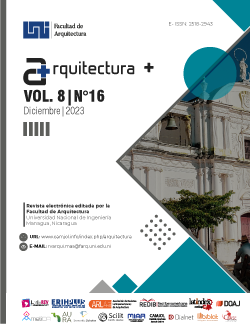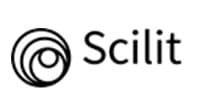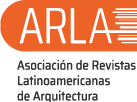Effects of land use change over de peak hydrograph in the 31 of December microbasin, Managua
DOI:
https://doi.org/10.5377/arquitectura.v8i16.17127Keywords:
Hyetograph, hydrograph, models, recurrence-period, rainfall-distributionAbstract
The aim of this research is to estimate the changes in the hydrographs at the 31 of December micro-watershed in Managua city for the sceneries land use 2018 and the projection of land use to the year 2040, applying a hydrological model. For the simulations it was used the Hydrologic Modeling System (HMS) from de Hydrologic Engineering Center (HEC) from USA. The hydrologic simulation is done for the 31 of December channel with de precipitation depths for return period 10, 25, 50 and 100 years and the rainfall distribution patter from Managua Airport station, for the quartile one and two. In order to estimate the flood hydrograph the Unitary Hydrograph from de Soil Conservation Service (SCS) was used. The results of the simulations indicate that could be an increasing of 9% for the effective precipitation and the maximum discharges from the simulated hydrographs will increase in about 30% as effect of the land use change in the micro-watershed 31 of December, and could represents a possible negative impacts by flooding in the low zones of the micro- watershed studied.
Downloads
References
Abt y Associates Inc. (1995). Estudio de Factibilidad del Programa de Manejo de la Cuenca del Lago de Managua. Author.
Alcaldía de Managua (ALMA) y Agencia de Cooperación Internacional del Japón (JICA). (2017). Proyecto del Plan Maestro para el Desarrollo Urbano del Municipio de Managua, en la República de Nicaragua. Informe Final. Author.
Blanco Chávez, M. E. (2021). Patrón de distribución temporal de la lluvia en la estación Aeropuerto de Managua, período 2002-2016. Nexo Revista Científica, Vol. 36, No. 06. https://doi.org/10.5377/nexo.v34i06.13120
Chow, V.T., Maidment, D. & Mays, L. (1988). Applied Hydrology. McGraw Hill.
Chow, V.T. (1994) Open Channel Hydraulics. McGraw Hill.
Congedo Luca. (2020). Semi Automatic Classification Plugging Documentation. V6.4.02. http://qgis.osgeo.org
Hydrologic Engineering Center HEC. (2000). Hydrologic Modeling System HEC-HMS. Technical Reference Manual. Army Corps of Engineers.
INTER-CONSULT. (2002). Estudio Agroecológico y de Drenaje Pluvial de la Subcuenca III de la Cuenca Sur del Lago de Managua. Informe Hidrológico Base. Author.
Instituto Nicaragüense de Estudios Territoriales (INETER). (2004). Atlas Climático de Nicaragua. Author.
Ministerio de Agricultura y Ganadería. (1971). Volumen I. Levantamiento de Suelos de la Región Pacifica de Nicaragua. Parte 2. Descripción de Suelos. Catastro e Inventario de los Recursos Naturales de Nicaragua. Author.
Natural Resources Conservation Services, NRCS. (1986). Urban Hydrology for Small Watersheds. Technical Release 55 (TR 55). Author
Natural Resources Conservation Services, NRCS. (2007). Part 630 Hydrology. National Engineering Hand Book NEH. Author.
QGIS Development Team. (2019). QGIS Geographic Information System. Open Source Geospatial Foundation Project. http://qgis.osgeo.org
United States Geological Survey USGS. (2018). Land Sat 8, USA: EROS, USGS. https://landsat.usgs.gov/landsat-collections.
World Meteorological Organization WMO. (4th ed., 1983). Guide to Hydrological Practice. Vol. II. Analysis, forecasting and other applications. WMO no. 168, 4th ed. Geneva, Switzerland. Author.
Downloads
Published
How to Cite
Issue
Section
License
Copyright (c) 2023 Universidad Nacional de Ingeniería

This work is licensed under a Creative Commons Attribution-NonCommercial-NoDerivatives 4.0 International License.





















